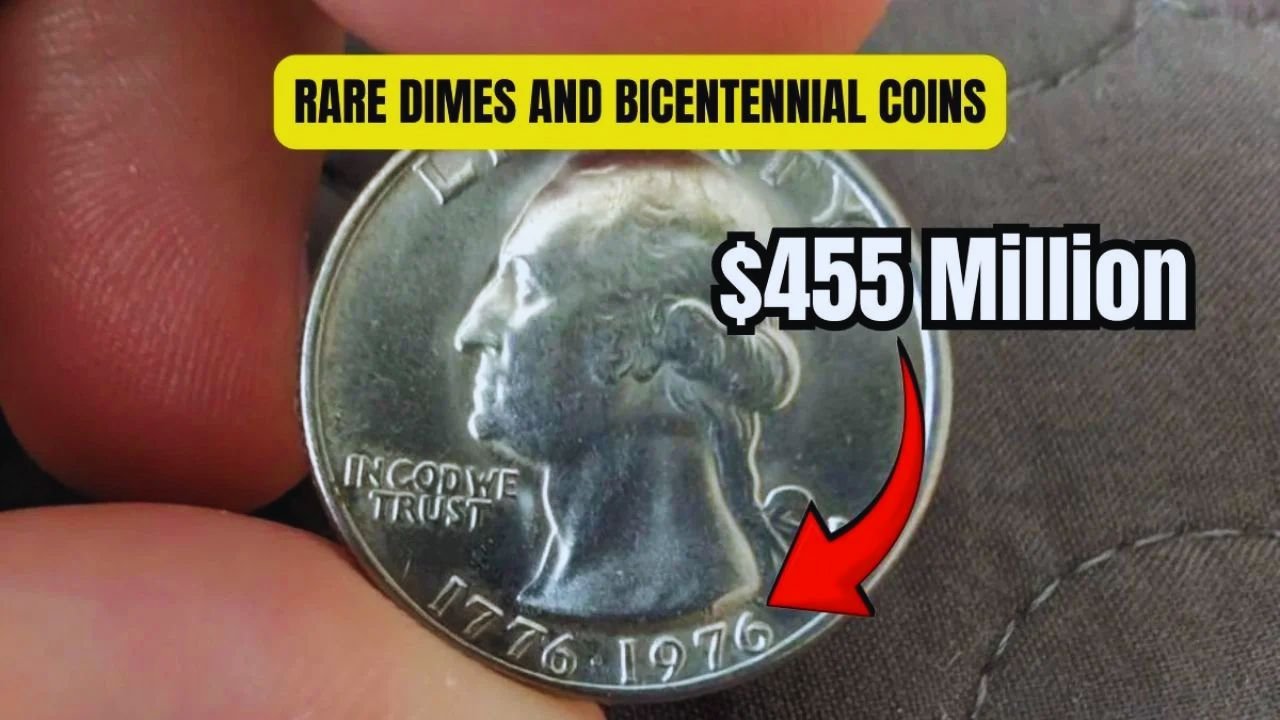Could your spare change make you a millionaire? Some rare dimes and 1976 Bicentennial coins, still floating around in circulation, are worth up to $455 million! From Mercury Dimes to special Bicentennial Quarters, these coins are hiding in wallets, coin jars, or even cash registers. Collectors are paying huge sums for them, and you might have one. Let’s explore five coins that could change your life and how to spot them.
Coins Packed with History
Dimes and quarters have been part of American money for over a century. The Mercury Dime, minted from 1916 to 1945, shows Liberty with a winged cap, often mistaken for the god Mercury. The 1976 Bicentennial Quarter, made for America’s 200th birthday, has a colonial drummer on the back. While most of these coins are common, a few with rare features—like errors or special mint marks—are worth a fortune, with one dime reportedly sold for $455 million!
The Top 5 Coins to Find
Certain dimes and quarters are collector’s gold. The 1916-D Mercury Dime, with only 264,000 made, can fetch up to $455 million in perfect condition. The 1976-S silver proof Bicentennial Quarter is another big winner, valued at up to $13 million. Other gems include the 1921 Mercury Dime, 1969-S doubled die dime, and 1976 double-die error quarter. These coins stand out for their rarity, errors, or silver content.
| Coin | Year | Mint Mark | Estimated Value |
|---|---|---|---|
| Mercury Dime | 1916 | D | Up to $455 million |
| Bicentennial Quarter (Silver) | 1976 | S | Up to $13 million |
| Mercury Dime | 1921 | None | Up to $500,000 |
| Roosevelt Dime (Doubled Die) | 1969 | S | Up to $200,000 |
| Bicentennial Quarter (Error) | 1976 | D or None | Up to $10,000 |
How to Spot These Valuable Coins
Finding one of these coins takes a little effort. For dimes, check the date on the front for 1916, 1921, or 1969, and look for a mint mark—a tiny “D” or “S” near the date. For 1976 quarters, check the mint mark below Washington’s neck; “S” means it might be silver. Use a magnifying glass to spot errors like doubled letters or blurry designs. Silver coins are shinier and slightly heavier. If you find a potential treasure, don’t clean it—scratches can lower its value.
- Check the date and mint mark with a magnifying glass.
- Look for errors like doubled letters or misprints.
- Weigh the coin to see if it’s heavier (silver ones are).
- Store it in a soft plastic holder to keep it safe.
Lucky Finds That Made Millions
People have found these coins by chance. In 2022, a Pennsylvania man discovered a 1916-D Mercury Dime in his change, selling it for $2 million. A Texas woman found a 1976-S silver quarter in a bank roll, fetching $15,000 at auction. Another collector spotted a 1969-S doubled die dime in a coin shop, earning $100,000. These stories show that valuable coins are still out there, waiting to be found in everyday change.
What to Do If You Find a Winner
If you think you’ve got one of these rare coins, don’t spend it! Put it in a protective case to avoid damage. Contact a trusted coin dealer or grading service like PCGS or NGC to verify its authenticity and value. Selling through a reputable auction house can get you the best price. Even if your coin isn’t worth millions, some are still valued at thousands. So, check your change, dig through old jars, or look in your wallet—you might just find a $455 million treasure!
